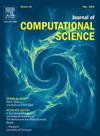模拟恐惧诱导意识项目对戒烟的影响
IF 3.7
3区 计算机科学
Q2 COMPUTER SCIENCE, INTERDISCIPLINARY APPLICATIONS
引用次数: 0
摘要
吸烟仍然是一项重大的公共卫生挑战,在全球范围内导致了许多可预防的疾病和死亡。要解决这一问题,就必须采取创新策略来提高戒烟率。在这项研究工作中,我们建立了一个数学模型来评估恐惧诱导宣传项目对促进戒烟的影响。该模型纳入了描述个体行为变化的参数,以捕捉恐惧诱导宣传项目与吸烟行为之间的动态相互作用。我们分析了从模型中得到的平衡点的局部和全局稳定性,从而提供了对系统动态的全面理解。此外,我们还发现了一些关键的分岔现象,包括鞍节点和跨临界分岔,这些分岔发生在前进和后退两个方向上,阐明了系统在参数变化下的质变。我们利用美利坚合众国(USA)的吸烟率数据进行了数值模拟,以验证分析结果并探讨关键参数对吸烟行为的影响。我们的研究结果表明,与单纯增加戒烟宣传项目的数量相比,强化宣传项目中的恐惧成分能更有效地促进戒烟。本文章由计算机程序翻译,如有差异,请以英文原文为准。
Modeling the effect of fear-inducing awareness programs on smoking cessation
Smoking remains a significant public health challenge, contributing to numerous preventable diseases and mortality worldwide. Addressing this issue requires innovative strategies to enhance smoking cessation rate. In this research work, we develop a mathematical model to evaluate the impact of fear-inducing awareness programs on promoting smoking cessation. The model incorporates the parameters depicting the behavioral changes of individuals to capture the dynamic interplay between fear-driven awareness programs and smoking behavior. We analyze the local and global stability of the equilibria obtained from the model, providing a comprehensive understanding of the system’s dynamics. Furthermore, we identify critical bifurcation phenomena, including saddle–node and transcritical bifurcations, occurring in both forward and backward directions, which elucidate the system’s qualitative changes under parameter variations. Numerical simulations are conducted using smoking prevalence data from the United States of America (USA) to validate the analytical results and explore the influence of key parameters on smoking behavior. Our findings highlight that intensifying the fear component within awareness programs is more effective in promoting smoking cessation compared to merely increasing the number of such programs.
求助全文
通过发布文献求助,成功后即可免费获取论文全文。
去求助
来源期刊

Journal of Computational Science
COMPUTER SCIENCE, INTERDISCIPLINARY APPLICATIONS-COMPUTER SCIENCE, THEORY & METHODS
CiteScore
5.50
自引率
3.00%
发文量
227
审稿时长
41 days
期刊介绍:
Computational Science is a rapidly growing multi- and interdisciplinary field that uses advanced computing and data analysis to understand and solve complex problems. It has reached a level of predictive capability that now firmly complements the traditional pillars of experimentation and theory.
The recent advances in experimental techniques such as detectors, on-line sensor networks and high-resolution imaging techniques, have opened up new windows into physical and biological processes at many levels of detail. The resulting data explosion allows for detailed data driven modeling and simulation.
This new discipline in science combines computational thinking, modern computational methods, devices and collateral technologies to address problems far beyond the scope of traditional numerical methods.
Computational science typically unifies three distinct elements:
• Modeling, Algorithms and Simulations (e.g. numerical and non-numerical, discrete and continuous);
• Software developed to solve science (e.g., biological, physical, and social), engineering, medicine, and humanities problems;
• Computer and information science that develops and optimizes the advanced system hardware, software, networking, and data management components (e.g. problem solving environments).
 求助内容:
求助内容: 应助结果提醒方式:
应助结果提醒方式:


